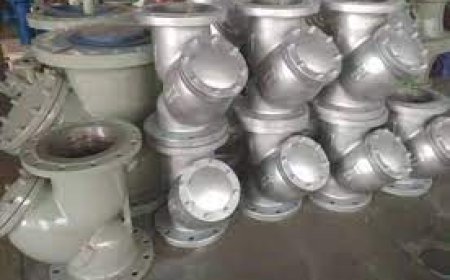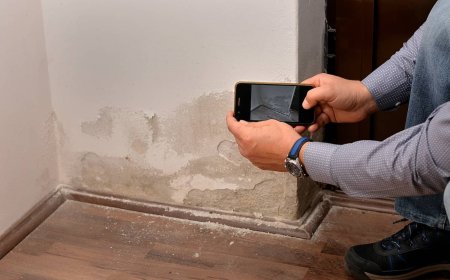Unlock the Power of Overhead Lines: A Complete Guide to ABC Cable, Benefits, Installation & Safety Tips
ABC Cable stands for Aerial Bundled Cable, a modern overhead power distribution system where insulated phase conductors are bundled tightly together
ABC Cable stands for Aerial Bundled Cable, a modern overhead power distribution system where insulated phase conductors are bundled tightly together. Unlike bare conductors in traditional overhead lines, ABC cable reduces the risk of faults, improves safety, and minimizes power theft.
ABC cable has transformed urban and rural electrification by providing an economical, low-maintenance solution that withstands harsh weather conditions.
Key Features of ABC Cable
? Insulated Conductors: Reduces short circuits caused by tree branches or contact.
? Bundled Design: Improves aesthetics and reduces right-of-way requirements.
? Low Maintenance: Fewer outages due to minimal faults.
? Safe Installation: Enhanced safety for workers and the public.
? Resistance to Power Theft: Makes illegal connections harder.
Technical Specifications of ABC Cable
| Component | Description |
|---|---|
| Conductor | Usually made of aluminium, sometimes with a steel core for extra strength |
| Insulation | Cross-linked polyethylene (XLPE) or high-density polyethylene (HDPE) |
| Voltage Level | LV (Low Voltage) up to HV (High Voltage) |
| Temperature Rating | Up to 90C for continuous operation |
| Design Standards | Follows international standards like IEC, BS, IS |
Types of ABC Cable
There are different configurations based on application:
-
Single-Phase ABC Cable: For residential power distribution.
-
Three-Phase ABC Cable: Used for commercial and industrial loads.
-
Self-Supporting ABC Cable: For longer spans with a messenger wire for mechanical strength.
Benefits of Using ABC Cable
? Improved Safety: Insulation reduces electrocution risks.
? Reliable Supply: Fewer interruptions even in stormy regions.
? Eco-Friendly: Less tree trimming, preserving green cover.
? Cost-Effective: Cheaper installation than underground cables.
? Long Service Life: UV-resistant insulation prolongs durability.
ABC Cable vs. Bare Conductor: A Quick Comparison
| Aspect | ABC Cable | Bare Conductor |
|---|---|---|
| Safety | High | Low |
| Maintenance | Low | High |
| Power Theft | Difficult | Easy |
| Aesthetics | Neat | Messy |
| Environmental Impact | Less | More |
Applications of ABC Cable
?? Urban Electrification Ideal for congested city areas with limited space.
?? Rural Distribution Reduces maintenance in forested or hilly areas.
?? Temporary Connections Construction sites, festivals, or outdoor events.
?? Replacement of Old Lines Upgrading aging bare conductor lines.
How to Install ABC Cable Safely
Step 1: Site Survey & Planning
-
Identify route, clearances, and pole locations.
-
Ensure compliance with local utility standards.
Step 2: Pole Installation
-
Poles should be adequately spaced to handle tension.
-
Anchors and stays may be required for stability.
Step 3: Stringing the Messenger Wire
-
For self-supporting systems, the messenger wire bears the weight.
Step 4: Fixing the Cable Bundle
-
Use tension clamps, suspension brackets, and spacers.
-
Maintain proper sag to avoid excessive tension.
Step 5: Connection & Termination
-
Use appropriate connectors to prevent overheating.
-
Insulate joints properly to maintain integrity.
Safety Note: Always follow live line working safety procedures or work under a shutdown.
Common Mistakes to Avoid
?? Insufficient Clearances: Leads to accidental contact with structures or trees.
?? Incorrect Tensioning: Over-tensioning can snap the conductor.
?? Improper Earthing: Causes voltage surges and faults.
?? Neglecting Insulation Checks: Damaged insulation can cause short circuits.
FAQs about ABC Cable
Q1: What is the lifespan of ABC Cable?
Most high-quality ABC cables have a lifespan of 2530 years, depending on weather and maintenance.
Q2: Can ABC Cable be used for underground systems?
No, ABC Cable is specifically designed for overhead distribution. Underground cables require different insulation and armoring.
Q3: Is ABC Cable fire-resistant?
ABC Cables insulation is flame-retardant but not fireproof. Regular inspections are vital in high-risk areas.
Q4: What maintenance does ABC Cable require?
Periodic visual inspections for wear, sagging, or damaged insulation, especially after storms.
Q5: Does ABC Cable support smart grid integration?
Yes, it can be used with smart meters and sensors for load monitoring.
Tips for Choosing the Right ABC Cable
? Check Voltage Rating: Match the cable to your system voltage.
? Verify Insulation Quality: Prefer XLPE for better heat resistance.
? Compliance with Standards: Ensure cables meet recognized standards.
? Reputable Suppliers: Choose trusted manufacturers to ensure quality.
? After-Sales Support: Availability of technical support and accessories.
How to Enhance the Performance of ABC Cable
? Regular Training for Linemen: Updated safety and installation techniques.
? Use Quality Accessories: Clamps, spacers, and connectors should be corrosion-resistant.
? Periodic Thermal Imaging: Detects hot spots before failure occurs.
? Community Awareness: Educate locals about safe distances and reporting faults.
ABC Cable Market Trends
The global market for ABC cables is growing due to:
-
Urbanization: Expanding cities demand compact power distribution systems.
-
Renewable Energy Integration: ABC cables distribute power from small rooftop grids.
-
Smart Grid Development: Integration with digital monitoring.
-
Sustainability: Governments promote eco-friendly solutions to reduce deforestation from excessive tree trimming.
Quick Facts
? Invented: 1960s in Scandinavia.
? Popular Regions: Europe, Asia-Pacific, Africa.
? Average Span Length: 5070 meters per pole for LV systems.
? Current Rating: Varies; consult manufacturer datasheets for specifics.
? Environmental Resistance: UV, rain, and wind-resistant.
Expert Insight
Electrical engineers recommend that communities with heavy foliage or high theft rates switch to ABC Cable. Its upfront cost might be slightly higher than bare conductors, but the savings in maintenance, reliability, and safety make it a smart investment for modern grids.































